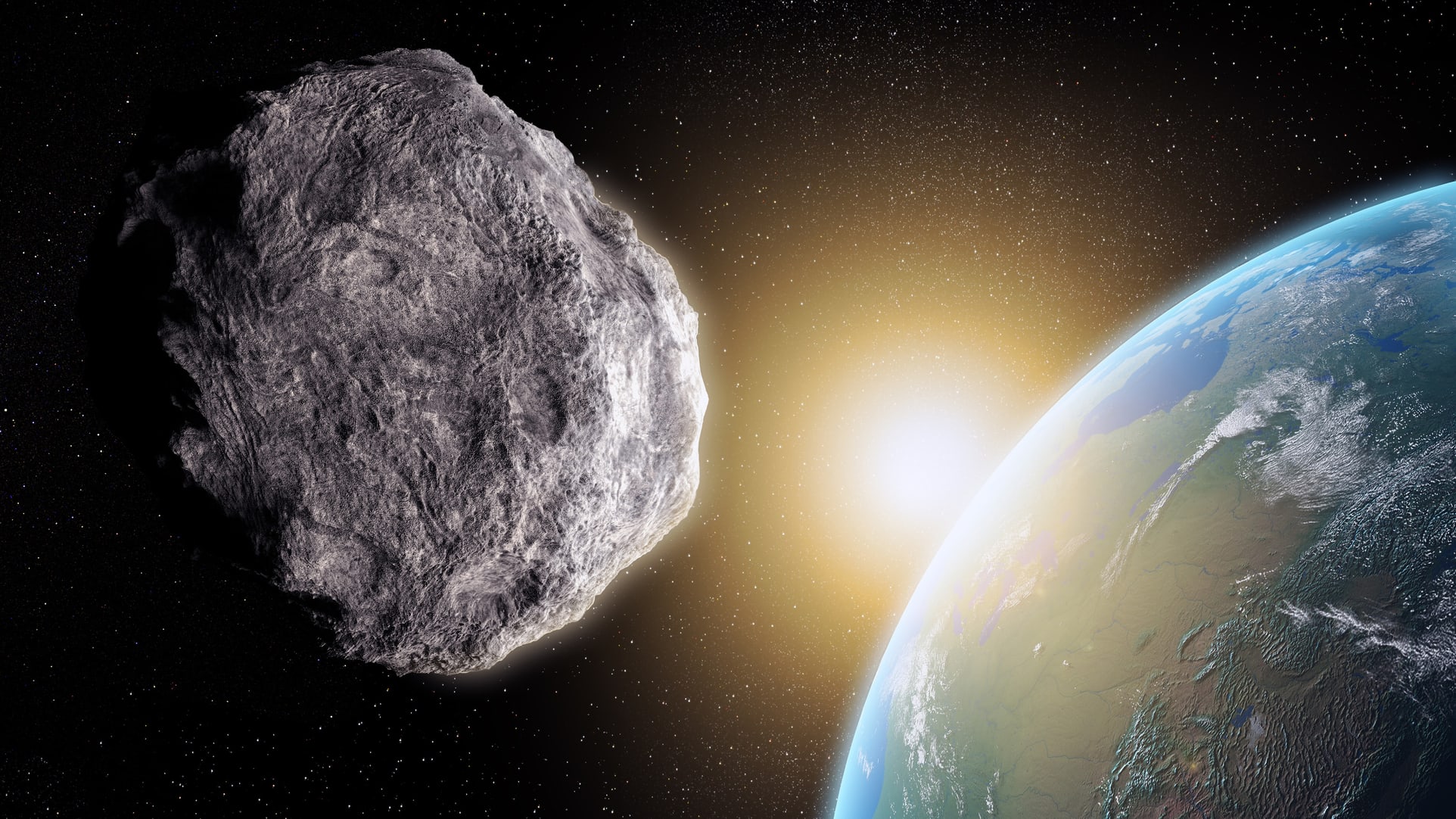Asteroid set to pass by Earth about as close as the moon


An asteroid is set to pass near Earth at a distance just greater than the distance between the Earth and the moon. Approximately the size of a bus, according to NASA's Center for Near-Earth Object Studies (CNEOS), the asteroid named 2023 HV5 will approach Earth at a distance of approximately 270,000 miles, Newsweek writes. For reference, the moon is approximately 240,000 miles away from Earth.
Despite appearing to not be that close, this is considered a near-Earth object (NEO) in the context of outer space, especially since the asteroid will be moving at 20,000 miles per hour. NEOs are "generally defined as an asteroid or comet that approaches our planet less than 1.3 times the distance from Earth to the Sun," and for the most part, tend to not be a threat, per NASA. They also "may provide needed raw materials for future interplanetary exploration" and "some should also be fairly easy to land on for future exploration."
Asteroids are "rocky fragments left over from the formation of the solar system about 4.6 billion years ago," that are mostly located between Jupiter and Mars. "However, as they are relatively small, asteroids can be disturbed quite easily, so they can develop orbits that cross those of planets," Jay Tate, the director of the Spaceguard Center observatory told Newsweek. Some especially close and large asteroids may get the designation of "potentially hazardous" because there could be a risk of it colliding with the Earth. "The 'potentially hazardous' designation simply means over many centuries and millennia the asteroid's orbit may evolve into one that has a chance of impacting Earth," according to Paul Chodas of CNEOS in Newsweek.
The Week
Escape your echo chamber. Get the facts behind the news, plus analysis from multiple perspectives.

Sign up for The Week's Free Newsletters
From our morning news briefing to a weekly Good News Newsletter, get the best of The Week delivered directly to your inbox.
From our morning news briefing to a weekly Good News Newsletter, get the best of The Week delivered directly to your inbox.
2023 HV5 is not considered to be potentially hazardous because of its size. In fact, there are no NEOs in the next 100 years that are predicted to hit Earth.
A free daily email with the biggest news stories of the day – and the best features from TheWeek.com
Devika Rao has worked as a staff writer at The Week since 2022, covering science, the environment, climate and business. She previously worked as a policy associate for a nonprofit organization advocating for environmental action from a business perspective.
-
 Why is Trump’s alleged strike on Venezuela shrouded in so much secrecy?
Why is Trump’s alleged strike on Venezuela shrouded in so much secrecy?TODAY'S BIG QUESTION Trump’s comments have raised more questions than answers about what his administration is doing in the Southern Hemisphere
-
 Vance’s ‘next move will reveal whether the conservative movement can move past Trump’
Vance’s ‘next move will reveal whether the conservative movement can move past Trump’Instant Opinion Opinion, comment and editorials of the day
-
 Why recognizing Somaliland is so risky for Israel
Why recognizing Somaliland is so risky for IsraelTHE EXPLAINER By wading into one of North Africa’s most fraught political schisms, the Netanyahu government risks further international isolation
-
 The biggest astronomy stories of 2025
The biggest astronomy stories of 2025In the spotlight From moons, to comets, to pop stars in orbit
-
 Blue Origin launches Mars probes in NASA debut
Blue Origin launches Mars probes in NASA debutSpeed Read The New Glenn rocket is carrying small twin spacecraft toward Mars as part of NASA’s Escapade mission
-
 ‘The Big Crunch’: why science is divided over the future of the universe
‘The Big Crunch’: why science is divided over the future of the universeThe Explainer New study upends the prevailing theory about dark matter and says it is weakening
-
 Dinosaurs were thriving before asteroid, study finds
Dinosaurs were thriving before asteroid, study findsSpeed Read The dinosaurs would not have gone extinct if not for the asteroid
-
 The moon is rusting
The moon is rustingUnder the radar The Earth is likely to blame
-
 Panspermia: the theory that life was sent to Earth by aliens
Panspermia: the theory that life was sent to Earth by aliensUnder The Radar New findings have resurfaced an old, controversial idea
-
 Africa could become the next frontier for space programs
Africa could become the next frontier for space programsThe Explainer China and the US are both working on space applications for Africa
-
 NASA reveals ‘clearest sign of life’ on Mars yet
NASA reveals ‘clearest sign of life’ on Mars yetSpeed Read The evidence came in the form of a rock sample collected on the planet
